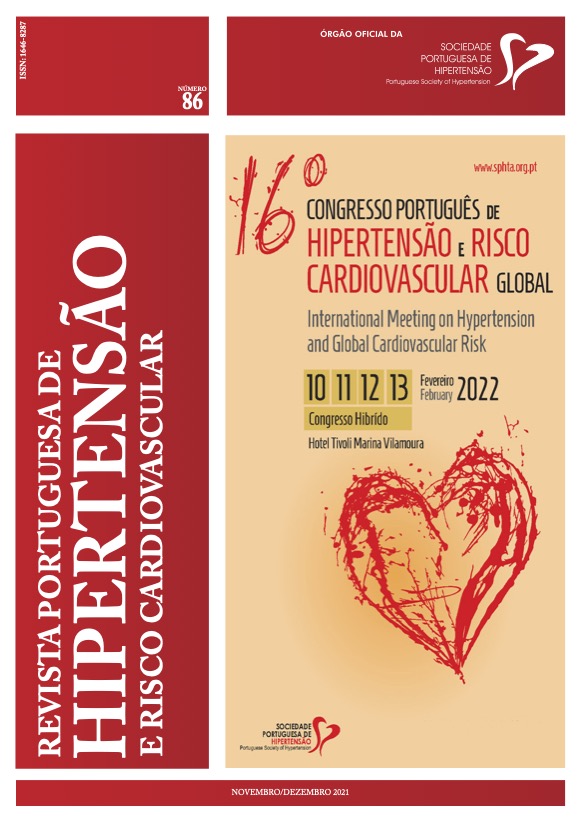HOME BLOOD PRESSURE MONITORING: A REFLECTION ON ADHERENCE IN A HYPERTENSION OUTPATIENT CONSULTATION
DOI:
https://doi.org/10.58043/rphrc.10Keywords:
Hypertension, Home Blood Pressure Monitoring, White Coat Hypertension, Masked HypertensionAbstract
Introduction: Blood pressure (BP) measurement in the office has been the cornerstone in the diagnosis and follow-up of hypertensive patients. However, it constitutes an isolated assessment, which may not reflect day-to-day BP values. Home Blood Pressure Monitoring (HBPM) has been increansingly used, since it is associated with more reproducible BP values, aids in the diagnosis of white coat hypertension and masked hypertension and seems to be associated with better adherence to therapy.
Methods: This is a retrospective study, which aims to assess HBPM adherence, in a sample of 149 patients followed in an outpatient hypertension consultation of a Portuguese hospital, from January 2017 to December 2018. From the first appointment, all patients are encouraged to monitor BP in an outpatient setting, its importance is explained, and they are instructed on how to do it properly.
Results: Mean ambulatory BP values were 133.1 ± 21.2 mmHg for systolic BP and 76.4 ± 12.1 mmHg for diastolic BP, compared to mean systolic BP values of 138.7 ± 17.2 mmHg and mean diastolic BP of 81.4 ± 11.3 mmHg evaluated in the clinic. Outpatient systolic BP was, on average, 5.6 mmHg lower than that measured in the clinic, and outpatient diastolic was, on average, 5 mmHg lower than that measured in the clinic, this difference being of statistical significance (p-value < 0.001).
Conclusion: HBPM provides an opportunity to monitor blood pressure values in a more reproducible way and integrated in the patient daily routine, allowing the identification of patients with white coat hypertension and masked hypertension. In addition, it appears to improve adherence to therapy and contribute to better BP control.
Downloads
References
Williams B., Mancia G., Spiering W., Rosei E., Azizi M., Burnier M., et al. 2018 ESC/ESH Guidelines for the management of arterial hypertension. Eur Heart J. 2018;38:3021-104.
Forouzanfar MH, Liu P, Roth GA, Ng M, Biryukov S, Marczak L et al. Global burden of hypertension and systolic blood pressure of at least 110 to 115mmHg, 1990-2015. JAMA 2017;317:165–82.
Rodrigues A., Gaio V., Kislaya I., Graff-Iversen S., Cordeiro E., Silva A. et al. Prevalência de hipertensão arterial em Portugal: resultados do Primeiro Inquérito Nacional com Exame Físico (INSEF 2015); Boletim Epidemiológico Observações. 2017;6(Supl 9):11-14
Ramli A, Halmey N, Teng C. White coat effect and white coat hypertension: one and the same?. Malays Fam Physician. 2008;3(3):158-161.
Chow C., Teo K., Rangarajan S., Islam S., Gupta R., Avezum A. et al. Prevalence, awareness, treatment, and control of hypertension in rural and urban communities in high-, middle-, and low-income countries. JAMA 2013; 310:959–968.





